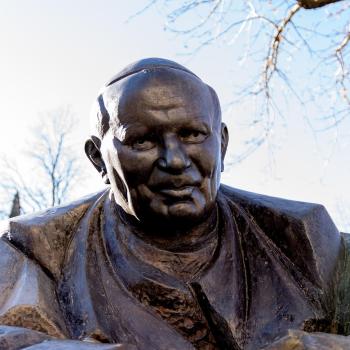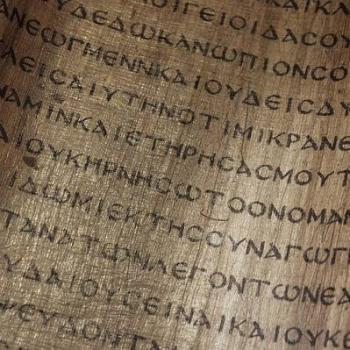THE QUESTION:
As Iran protests persist, what women’s clothing does Islam require?
THE RELIGION GUY’S ANSWER:
The facts are these. On September 13, Iran’s morality police arrested 22-year-old Mahsa Amini for violating the legally required Muslim dress code for women. She was wearing the mandatory head scarf (hijab), but apparently it did not correctly conceal all of her hair. Three days later, Amini died while still in police custody. The government blames a heart attack, but suspicions that she was abused run rampant.
In the spontaneous uproar that resulted, refusal to wear the hijab became a symbol of resisting oppression as protests across the nation targeted not only restrictions for women but expressed over-all rejection of the harsh theocratic regime that has ruled revolutionary Iran the past 43 years. At this writing, at least 200 Iranians have reportedly been killed and 1,500 demonstrators arrested.
Azadeh Moaveni of New York University wrote Monday in The New York Times that resentment boiled over in part because women in Tehran’s wealthy and politically-connected elite flagrantly ignore the Muslim dress laws without arrest.
There’s always been vigorous discussion of the complexities about exactly what attire is properly modest and thus faithful to Islam. Responding to events in Iran, Deina Abdelkader at the University of Massachusetts Lowell contends that clothing rules “have nothing to do with Islamic tenets” while Muslim countries have imposed — or forbidden — forms of women’s attire in order to proclaim their ideology, whether secular or scrupulously religious.
Islam’s fundamental concern here is not unique, since religions normally advocate modesty and propriety. In particular, Jewish tradition associates attire as part of a general admonition in the Torah (Deuteronomy 23:15, JPS translation): “Let your camp be holy; let Him [God] not find anything unseemly among you and turn away from you.”
The biblical Song of Songs depicts women’s hair as especially alluring. And long before the rise of Islam, Jewish law taught that modesty meant women should not display their natural hair in public after they are married. Down to the present day, observant Orthodox women wear wigs or head scarves to cover their hair, and certain rigorists shave their heads as an act of piety.
In the Islamic tradition, women’s clothing is to be loose-fitting in order to cloak the figure. While the hijab scarf covers the hair and neck area, that word is also used for full outfits that cover the body except for the face and hands. Other terminology for garb includes the burqa, chador, khimar, or niqab. In some contexts, Muslim women will also cover their faces except for the eyes, or even conceal the eyes entirely behind a mesh veil.
The Quran required veiling only in the special circumstance of etiquette for those given the privilege of visiting the Prophet Muhammad’s household (per 33:53). Guests who spoke with his wives were told to do so respectfully from behind a “veil” (also translated as “screen” or “curtain”).
The Quran’s main text on women’s modesty (24:31) does not specify any Iran-style restrictions on hair or attire: “Tell the believers to cast own their eyes and guard their private parts and not show their finery except the outward part of it. And let them drape their bosom with their veils and not show their finery” except to husbands, close male relatives, female servants, male servants with “no sexual desire” and young children (per the Majid Fakhry edition).
Verse 7:26 similarly records God’s statement that “we have provided you with clothing and finery to cover your private parts.” And verse 33:59 says “tell your wives and daughters and the wives of the believers to draw their outer garments closer. That is more conducive to their being known and not being injured.” That means this will prevent harassment.
Verse 24:60 adds this: “Those women who are past child-bearing and have no hope of marriage are not at fault if they take off their outer garments, not exhibiting any finery; but to refrain is better for them.”
Traditions preserved from very early in Musim history, according to “The Study Quran,” stated that slaves were forbidden to cover their hair, meaning that concealment was a sign of a woman’s higher social status. Eventually, stablished Muslim jurisprudence required coverage of “almost everything but the hands (and sometimes the forearms), face, and sometimes feet (and sometimes part of the calf).”
It’s noteworthy that the Quran also requires modesty for men. Verse 24:30 is addressed to believers in general and thus includes and by interpretation emphasizes men, telling all “to cast down their eyes and guard their private parts. That is purer for them. Allah is conversant with what they do.” According to Muslim tradition, when in public men also wear loose clothing and never expose their nakedness between the navel and the knees.
Modesty teaching outside the Quran includes an authoritative Hadith tradition in which the Prophet taught regarding suggestive clothing that “women who would be dressed but appear to be naked . . . will not enter Paradise.” (Shih Muslim, Book 37 #190).
Hidjabaya.com of Riverdale, NJ, which markets clothing and accessories for Muslim women, states that any particular style “is a personal choice for a Muslim woman rather than a religious requirement,” that the Quran leaves specifics up to “individual interpretation,” and that liberals “believe that Islam does not require hijabs.”
This site explains that for Muslims the hijab symbolizes “modesty and dignity,” principles that involve more than just attire. “The clothes should be accompanied by eyesight, heartfulness, and intentionality. It also includes how a person walks, talks, and interacts with other people.” For Christians, that will bring to mind Jesus’s well-known saying in the Sermon on the Mount: “You have heard that it was said, ‘You shall not commit adultery.’ But I say to you that every one who looks at a woman lustfully has already committed adultery with her in his heart.”












